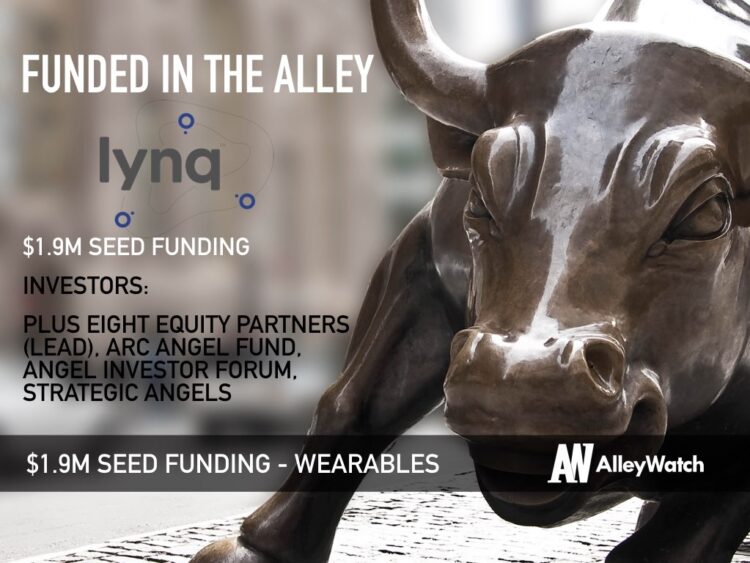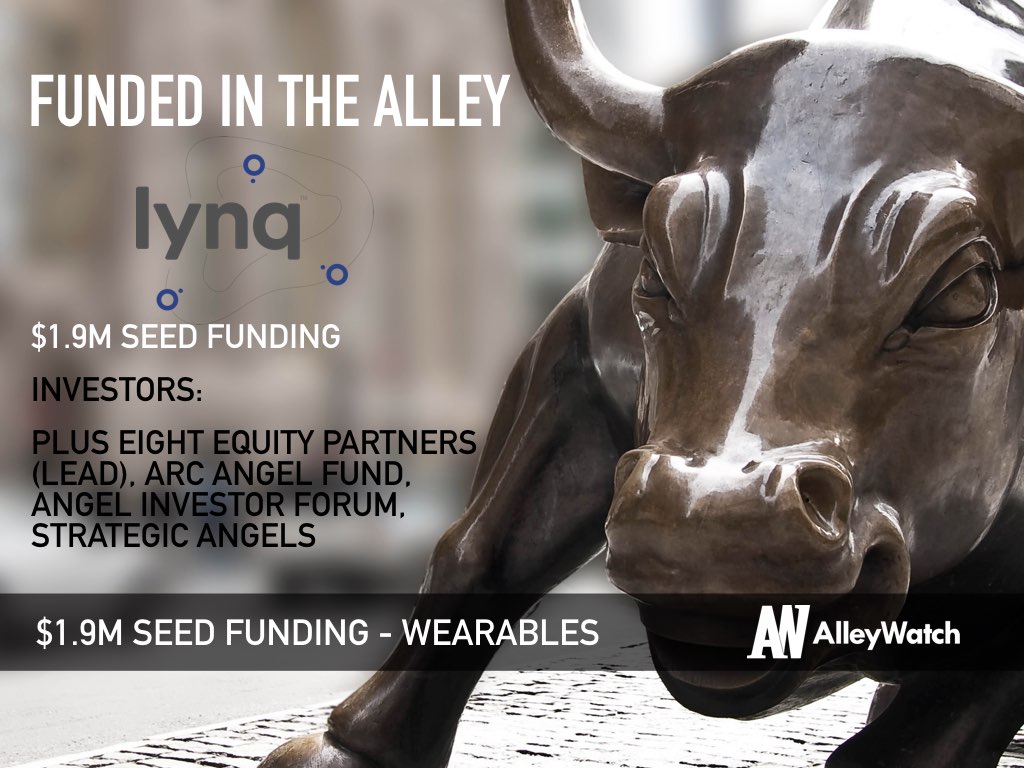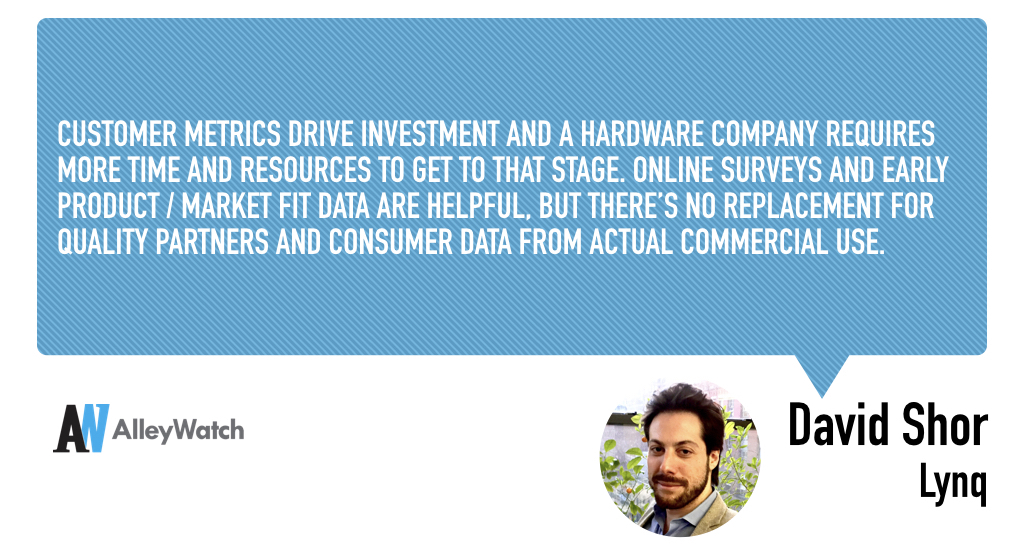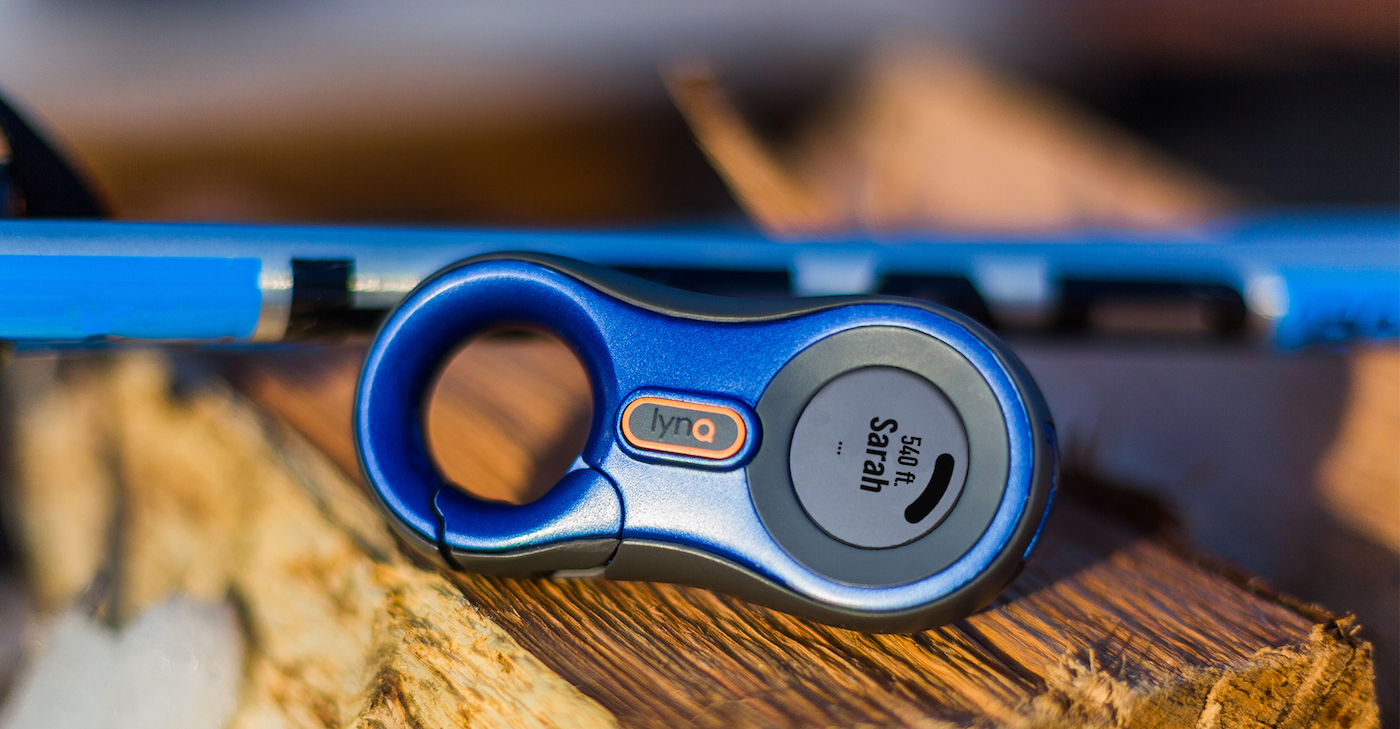We are so heavily reliant on technology that we often don’t think about a backup plan if technology were to fail us. While most situations don’t require a plan B, when someone is at risk of getting lost you’ll wish you had a safety plan. Introducing, Lynq, the wearable that tracks the location of your group. The device, which is not dependent on Wifi, Bluetooth, cell service, or maps, makes sure that everyone is accounted for, whether you are in a state park or on a humanitarian mission in a remote area. The device is weatherproof and easy to use, making sure that safety is priority number one.
AlleyWatch chatted with cofounder David Shor about the company and discussed the company’s third round of funding.
Who were your investors and how much did you raise?
It was a Seed round totaling $1.9M, led by Plus Eight Equity Partners with participations from ARC Angel Fund, Angel Investor Forum and strategic angels.
Tell us about your product or service.
At its simplest – never lose your people. It’s a device that fits in the palm of your hand and tells you the direction and distance to someone you care about, whether it’s your child or parent, fellow campers, skiers in a group, workmen on a job site, or fleet of NGO volunteers on a humanitarian mission. Our peer-to-peer technology allows individuals and groups to locate each other independent of phones, cell networks, Wi-Fi, Bluetooth and maps – and it works anywhere in the world. And as powerful as it is, it’s remarkably simple – with a 1-button interface. It’s rugged, waterproof and can withstand extreme temperatures. Lynq is completely decentralized and up to 40,000 units can be supported in a small area without interference – a remarkable piece of engineering.
What inspired you to start the company?
It started as a simple desire to stay together when we’re disconnected and evolved into keeping people meaningfully safer. On group trips (festivals, skiing, hikes, etc.) we always spent a lot of our day looking for each other. Parents in the group had it even more difficult. You could see the immediate anxiety the moment their kids were out of sight – a common experience for parents, even when kids are playing in a park or in their backyards.
As I looked over possible solutions, I noticed articles on lost hikers that died off of the trail and drowning deaths of children with autism that wandered (an all too common occurrence). It became clear that we could create something that also has the ability to save lives, such as when used for rescue operations, care for special needs children or those with Alzheimer’s, as well as humanitarian aid and disaster relief efforts around the globe.
How is it different?
It works when nothing else will and when it comes to those you care about – reliability is not a luxury. Current location technologies rely on the need for a phone, cell networks, wi-fi, maps or large infrastructure deployment (such as Disney’s magic band or the government’s Blue Force trackers).
Lynq is the only technology doesn’t need any of that – it works for miles, completely decentralized. And while the curvature of the earth sets Lynq’s off-grid upper limit at approximately 5 miles on the ground, we anticipate 20-30 miles from the air (helicopter, plane).
What market you are targeting and how big is it?
Our launch is targeted towards families and outdoor enthusiasts, a $20B+ market. For B2B2C rentals, our initial focus is on three verticals (ski resorts, theme parks and festivals), a combined market north of $5B annually.
Government and NGO interest has been around humanitarian aid, disaster relief, search and rescue and stealth operations and we see future / long-term market opportunities there as well as workforce management for industrial use.
Our roadmap extends beyond the initial product and the market opportunities for the technology is even larger.
What’s your business model?
We drive revenue through a combination of B2B2C licensing and consumer sales.
On first business customers include ski resorts, theme parks and festivals that rent Lynq to their customers with a $5 per-unit per-use licensing fee paid to Lynq. Our upcoming “Gateway” will provide real-time monitoring, messaging and data trends exclusively to customers that license our technology.
On the consumer side, price is still being determined, though buyer intent was clear at our first commercial betas. 90% of those that used Lynq wanted to buy one at $99/unit and our net promoter score was 60 (for context, Apple is a 72).
Your technology offering can be used in a variety of functions. How do you go out about planning what uses make the most sense for initial rollout?
Our initial rollout focuses on family and outdoor enthusiasts, with a large part of the marketing geared towards parents. A family oriented launch is a common thread across our staggered consumer and B2B2C rollouts, allowing each one to leverage the success of the other.
What was the funding process like?
It started slowly with a rapid finish after we hit our key milestones. All throughout, building relationships was equally as important as the milestones themselves. An investor needs to believe in the founders and we’re extremely lucky to have investors who not only see the massive implications of our technology, but also, our ability to execute.
What are the biggest challenges that you faced while raising capital?
Customer metrics drive investment and a hardware company requires more time and resources to get to that stage. Online surveys and early product / market fit data are helpful, but there’s no replacement for quality partners and consumer data from actual commercial use. Once a product gets there, fundraising becomes a great deal easier – but it takes a hardware company a lot longer to reach that MVP stage.
What factors about your business led your investors to write the check?
Our team was an important factor, as was the uniqueness and broad applications of the technology. In the end, 4 key factors drove the quick jump in interest:
- High-profile beta partners.
- Our first works-like, looks-like prototype that was able to be used at betas in a commercial environment.
- Outstanding metrics and consumer feedback from the betas.
- A large development in our roadmap / IP that demonstrated the far-reaching capabilities and scalability of the technology itself.
What are the milestones you plan to achieve in the next six months?
It’s all about building towards our first production run and driving sales –- both purchase orders on the B2B2C side and consumer pre-sale.
What advice can you offer companies in New York that do not have a fresh injection of capital in the bank?
Take a hard look at every cost and ask if it’s a “need to have”. Do the same for the features of your product. You have to be really scrappy and focus on what’s important.
Ask investors what milestones they need to see in order to move forward and focus heavily on what you need to do to achieve those – filter out the noise.
And most of all, persistence.
Where do you see the company going now over the near term?
In the short term, we’re focused on securing key partnerships and preparing for launch.
What’s your favorite rooftop bar in NYC to unwind?
The Jimmy. Great atmosphere.






